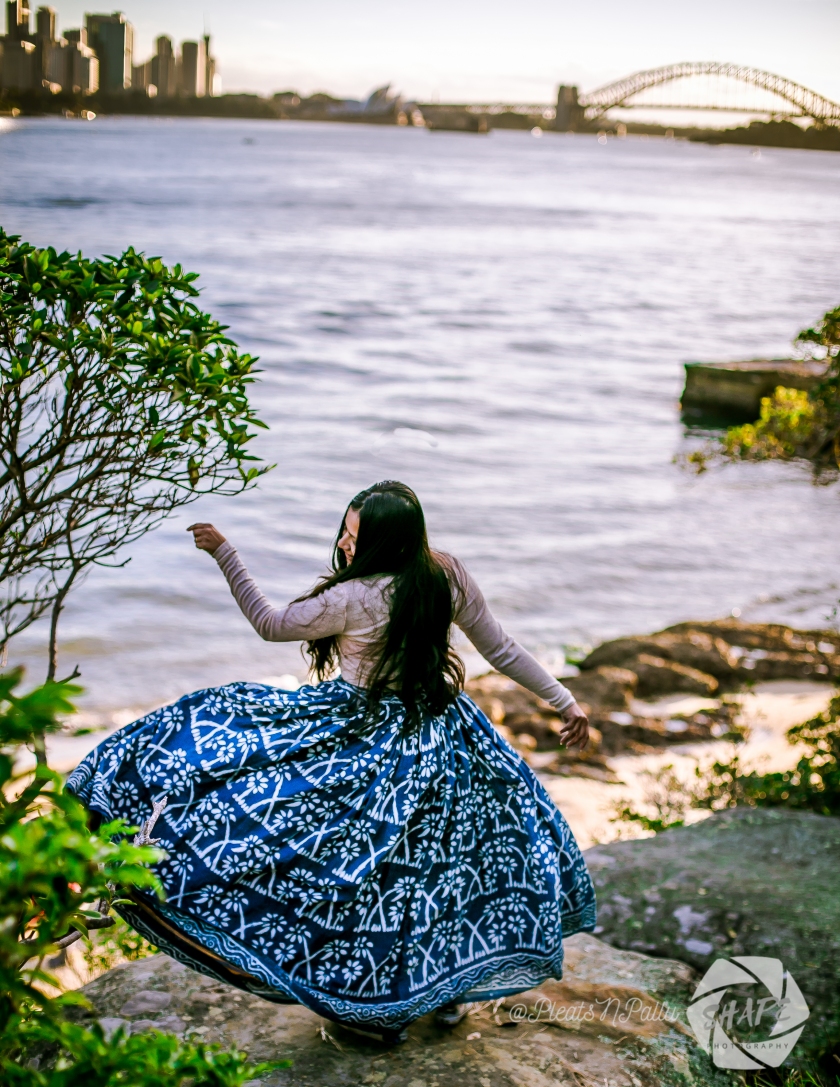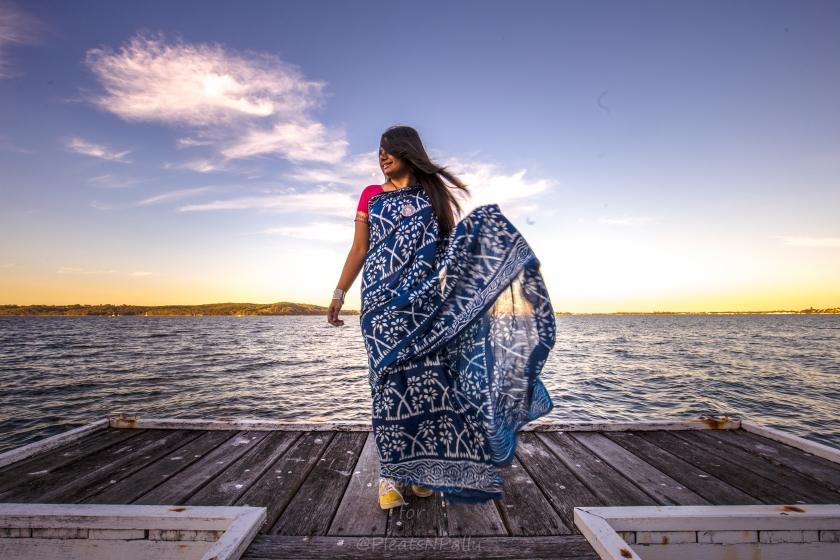Another one in the long running series of dupattas that are converted into sarees and then made into lehengas …



Photos: Vincent Boyer (Say hi on instagram @vincetravelbook)
This lehenga (also known as gaghra or chaniya or just simply a gathered skirt) used to be three dupattas that I wore as a saree for ages before realising that the number of indigo block print sarees in my wardrobe was astounding. I re-homed a few of them with other saree-enthusiasts and decided to ask the boy to make this into a lehenga/ gaghra for my birthday.
I am wearing it here with a cropped merino wrap-around top, sneakers and was carrying a wool coat to wear over it in case the temperatures dipped further. You can view more photos of this lehenga in its previous avatar as a saree in a previous post from over two years ago here.
I do tend to wear full-length gathered skirts quite a bit in my everyday outfits and definitely could do with an indigo piece. Being the crazy plant lady I am, I also quite liked the dabu printed motifs on this particular length of fabric.
Dabu printing is an elaborate traditionally unique way of dyeing and printing by which exceptional motifs are created on handwoven and machine made fabrics. The recently declared Unesco world heritage site – Jaipur, is surrounded by a number of traditional villages that comprise of predominantly block print artisanal communities.
By taking advantage of the fine desert sand of Rajasthan, generations of craftspeople have been able to create this mud-resist known as ‘dabu’.
A cold-water resist, dabu is particularly effective for blocking out areas during an indigo bath. The character of dabu and the wooden blocks used to apply it, go together to create the distinctive patterns known as dabu prints.
Block prints like these are done by instinct and don’t involve much mechanical interference and they display obvious signs of the human hand, imperfections that are a part of the timeless beauty of the craft.
What gets me completely enamoured with these fabrics is the knowledge that it involves generations of a community, a heritage built around the craft, where artisans often across religions, castes and tribes form a shared history.
I really love wearing these prints on everything from pants to dresses to sarees to skirts to work-shirts to singlets and what have you. One of my favourite items of clothing though is the traditional cotton gaghras or chaiyas that are every day wear for many nomadic tribes people in Karnataka, Uttar Pradesh, Madhya Pradesh, Rajasthan and Gujarat. I love wearing them throughout the year and believe that they are the most fun as winter-wear.
Some of the ways I plan to wear this lehenga/ gaghra in the winter are listed below and I am always looking to add to this list:
- Paired with a beanie, sweatshirt and chunky boots for when the temperatures hit single digits.
- Worn with a merino base layer, a thick embroidered choli over it and converse hi-tops.
- With a chunky cable-knit sweater, an over-size denim jacket and knee-length boots.
- With a lambswool turtle-neck, a leather jacket and double sole sneakers.
- With a basic merino sweater, a dupatta and a Kutchi embroidered shawl.
- With a tight cashmere body suit and an angrakha or front open anarkali over it.
- With a silk and wool fitted sweater, a trench coat and heeled boots.
- With a merino base layer top plus leggings, a peplum top and fleece-lined booties.
- As a dress, I just tie the gaghra over the bosom, wear a heavy duster cardigan over it and tall boots under.
What are your favourite ways to upcycle sarees and what is your preferred way to style a lehenga/ gaghra as the temperatures drop?
If you are keen to read about similar topics, I have previously published the first in a series of post about the various kinds of hand block printed fabrics from different parts of India, which you can find here, I have also posted another block-print-dupattas-turned saree-turned-lehenga and various ways of styling it in the warmer months here and here is a post from few years ago in a bandhani lehenga with a grey sweater.